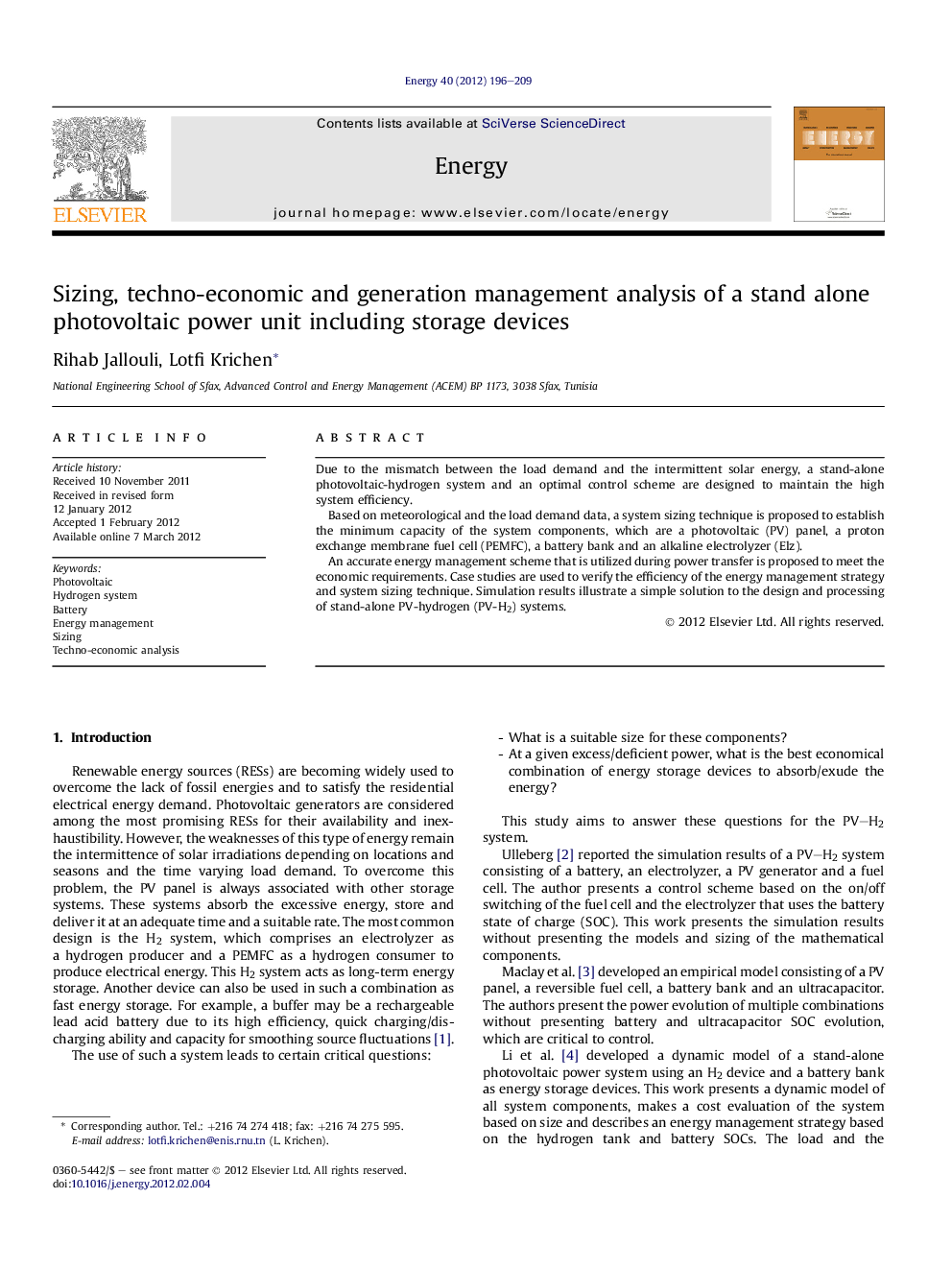| Article ID | Journal | Published Year | Pages | File Type |
|---|---|---|---|---|
| 1734089 | Energy | 2012 | 14 Pages |
Due to the mismatch between the load demand and the intermittent solar energy, a stand-alone photovoltaic-hydrogen system and an optimal control scheme are designed to maintain the high system efficiency.Based on meteorological and the load demand data, a system sizing technique is proposed to establish the minimum capacity of the system components, which are a photovoltaic (PV) panel, a proton exchange membrane fuel cell (PEMFC), a battery bank and an alkaline electrolyzer (Elz).An accurate energy management scheme that is utilized during power transfer is proposed to meet the economic requirements. Case studies are used to verify the efficiency of the energy management strategy and system sizing technique. Simulation results illustrate a simple solution to the design and processing of stand-alone PV-hydrogen (PV-H2) systems.
► We study a stand alone PV-hydrogen system comprising renewable devices. ► A PV generator, a battery bank, a fuel cell and an electrolyzer are modeled. ► Power management taking into account the economic arrangement and the operating conditions to ensure energy availability is proposed.
